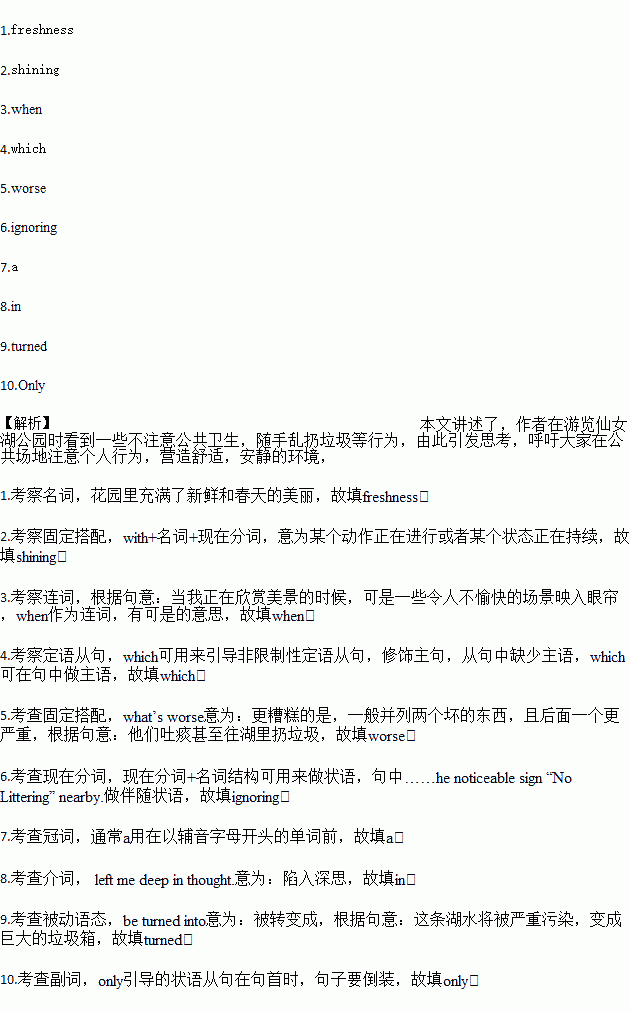题目内容
Last Sunday, I went sightseeing with my friends in the Fairy Lake Park. The park was full of 1.(fresh) and beauty of spring, with the sun2.(shine) and birds singing. I was enjoying the fantastic scenery around3.something unpleasant caught my eye. A young couple in a boat were eating, talking and laughing loudly, 4. seemed as if they were the only people in the world. What's 5.(bad), they spat and even threw rubbish into the lake, totally6.(ignore) the noticeable sign “No Littering” nearby. What 7.shame!
Such behavior left me deep8.thought. If all visitors to the Fairy Lake Park do as the couple did, the lake will be severely polluted and soon 9.turn) into a huge dustbin. I think all of us should mind our behavior in public places. 10.in this way can we live in more comfortable and beautiful surroundings.
 A加金题 系列答案
A加金题 系列答案 全优测试卷系列答案
全优测试卷系列答案

 nd live with their virtual friends. They share their emotions and feelings with friends who they have never met in their life. Although they feel confident on the computer, they are not confident with real live friends they have known all their life. It is a problem for the future. This addictive behavior is beginning to affect all the world.
nd live with their virtual friends. They share their emotions and feelings with friends who they have never met in their life. Although they feel confident on the computer, they are not confident with real live friends they have known all their life. It is a problem for the future. This addictive behavior is beginning to affect all the world. u’re in trouble on that date if you lend someone something,because you won’t get it back!In India,March 31 is the day for tricks. Portuguese,who celebrate on the Sunday or Monday before the Christian holiday of Lent,throw flour on their friends. People in England say playing tricks after noon on April 1 brings bad luck to the jokers. The U.S. holiday doesn’t have special traditions.
u’re in trouble on that date if you lend someone something,because you won’t get it back!In India,March 31 is the day for tricks. Portuguese,who celebrate on the Sunday or Monday before the Christian holiday of Lent,throw flour on their friends. People in England say playing tricks after noon on April 1 brings bad luck to the jokers. The U.S. holiday doesn’t have special traditions. ademic requirements B. social expectations
ademic requirements B. social expectations